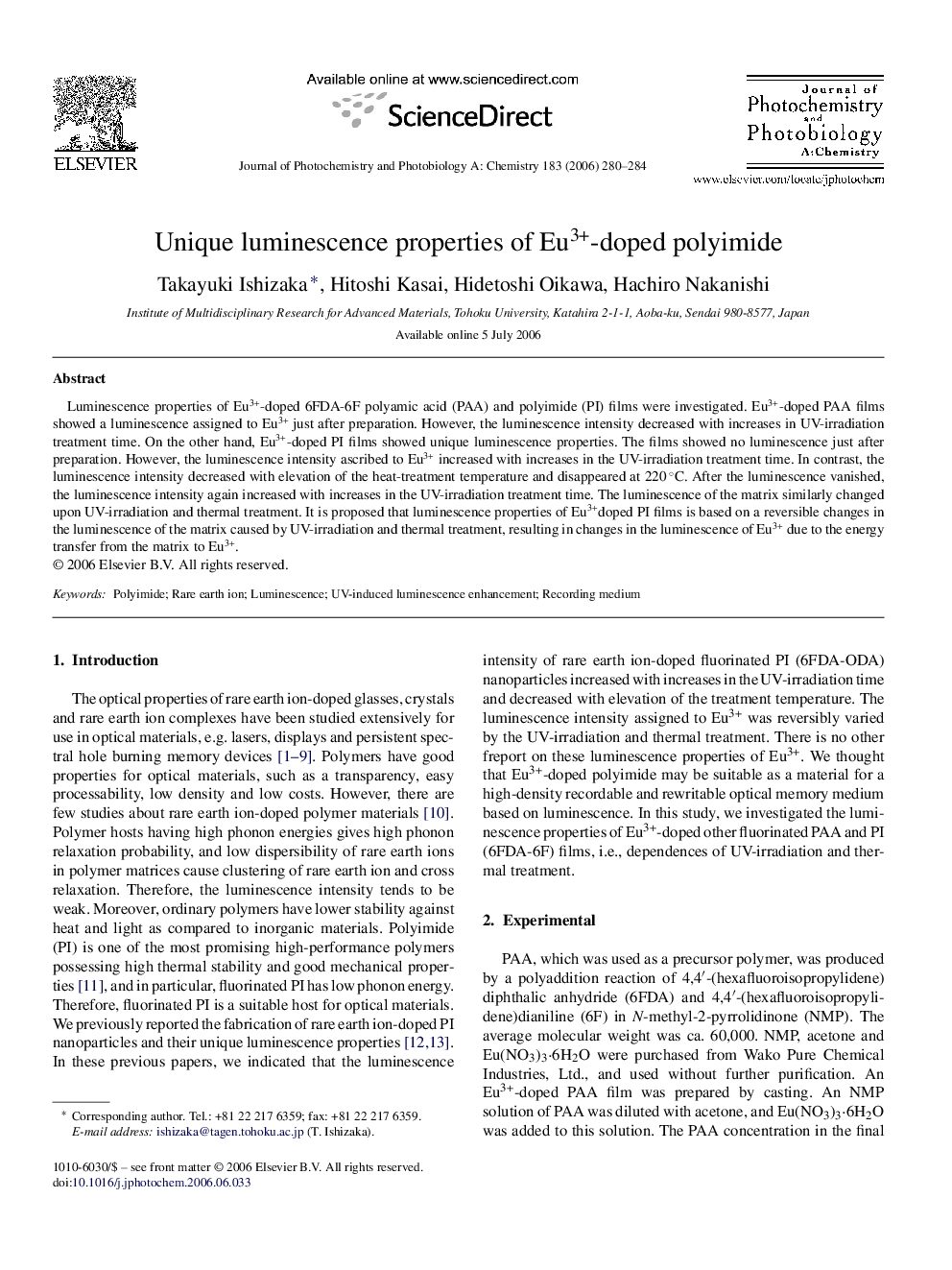| Article ID | Journal | Published Year | Pages | File Type |
|---|---|---|---|---|
| 28324 | Journal of Photochemistry and Photobiology A: Chemistry | 2006 | 5 Pages |
Abstract
Luminescence properties of Eu3+-doped 6FDA-6F polyamic acid (PAA) and polyimide (PI) films were investigated. Eu3+-doped PAA films showed a luminescence assigned to Eu3+ just after preparation. However, the luminescence intensity decreased with increases in UV-irradiation treatment time. On the other hand, Eu3+-doped PI films showed unique luminescence properties. The films showed no luminescence just after preparation. However, the luminescence intensity ascribed to Eu3+ increased with increases in the UV-irradiation treatment time. In contrast, the luminescence intensity decreased with elevation of the heat-treatment temperature and disappeared at 220 °C. After the luminescence vanished, the luminescence intensity again increased with increases in the UV-irradiation treatment time. The luminescence of the matrix similarly changed upon UV-irradiation and thermal treatment. It is proposed that luminescence properties of Eu3+doped PI films is based on a reversible changes in the luminescence of the matrix caused by UV-irradiation and thermal treatment, resulting in changes in the luminescence of Eu3+ due to the energy transfer from the matrix to Eu3+.
Keywords
Related Topics
Physical Sciences and Engineering
Chemical Engineering
Bioengineering
Authors
Takayuki Ishizaka, Hitoshi Kasai, Hidetoshi Oikawa, Hachiro Nakanishi,
